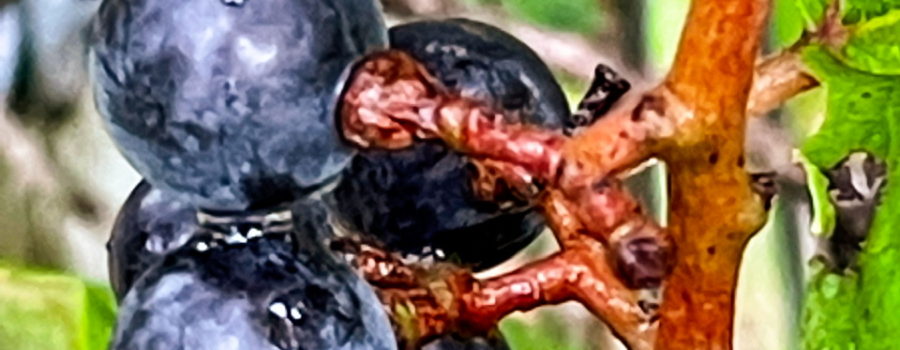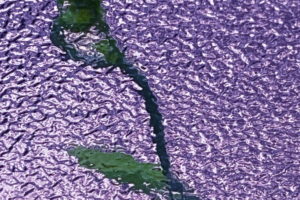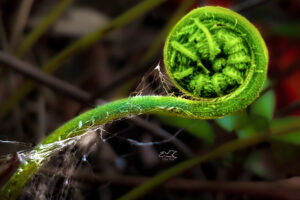Summer Grape is Very Important to the Florida Ecosystem

Florida has many different types of vines, and out here in the woods one of the easiest places to spot them is growing over wire fences that enclose people’s property or pastures. Many of these vines are also well known for climbing not only fences but trees, shrubs, even houses. One of our greatest climbers is the summer grape or pigeon grape. These deciduous vines can get to be 30-35 feet long with several branches. These vines tend to grow in tangles that can get quite large and heavy. They cling onto trees and siding by means of spiraling tendrils. They are very common down here and I can remember seeing them all over our property everywhere I’ve lived while in this state. We had a huge one outside the back door of our dorm in college. It went well up into a large pine tree there and provided a wonderful nesting site for a family of mockingbirds.

When our family moved here while I was in high school we were used to a wet, rainy environment with lots of vegetation, since we came from western Oregon, but it was nothing compared to the near rain forest conditions we have around here. One of the reasons the woods are so dense is all the vines (and summer grape is one of the largest and most common, so it’s a huge contributor)! Although Oregon had some vines, they were nothing like our summer grapes. The summer grape is thought to be one of the oldest if not the oldest grape cultivar in North America. It has a natural range that runs from Ontario south through Florida and west into Texas, Oklahoma, and Minnesota. It also grows as a non-native in California.

Summer grapes are very closely related to other types of cultivated grapes and they are edible, although they are pretty sour (which I can attest to) and they contain four to five seeds. For these reasons most people don’t eat them except in pies, pastries, and preserves. People also sometimes used summer grapes to make wine (which I’m sure is why they are grown in California). The leaves can also be eaten, raw or cooked, or used to wrap rice, meat, or cheeses. Even though most people aren’t overly fond of summer grapes right off the vine, a lot of the various wild things love them. They usually only flower for about a week, but during that time they are frequently visited by bumble bees, honey bees, wasps, butterflies and other pollinators. Several types of caterpillars live on them and feed on the leaves, tendrils, and new sprouts in the spring. Once the fruit ripens it is quickly eaten by a huge variety of birds including wild turkeys, jays, cardinals, robins, quail, pileated woodpeckers, red bellied woodpeckers, and sparrows to name but a few. There are plenty of mammals that also enjoy summer grapes. These include black bears, grey squirrels, foxes, deer, and skunks. If fruit falls on the ground or grows in a low enough area it will also be consumed by wild rabbits, box turtles, and gopher tortoises. By eating the fruit all of these animals help to spread the seeds to new areas.

Summer grapes are great for wildlife not only as food, but also as shelter, nesting sites, and nesting material. Lots of birds, like the mockingbirds outside our dorm, use the dense tangles as safe places to nest and to hide from predators. Many of them also use the leaves and old bark, which tends to come off in shreds, as nesting material. Additionally, some small mammals like squirrels, field mice and white footed mice nest in summer grape vines. These vines also provide shelter to young reptiles, tree frogs, and literally hundreds of types of insects, insect larvae, and insect eggs. From all of this, I hope that you can see that the summer grape vine is not only pretty to look at and produces pretty, edible fruit, but it plays an integral part in our Florida ecosystem.






Recent Comments